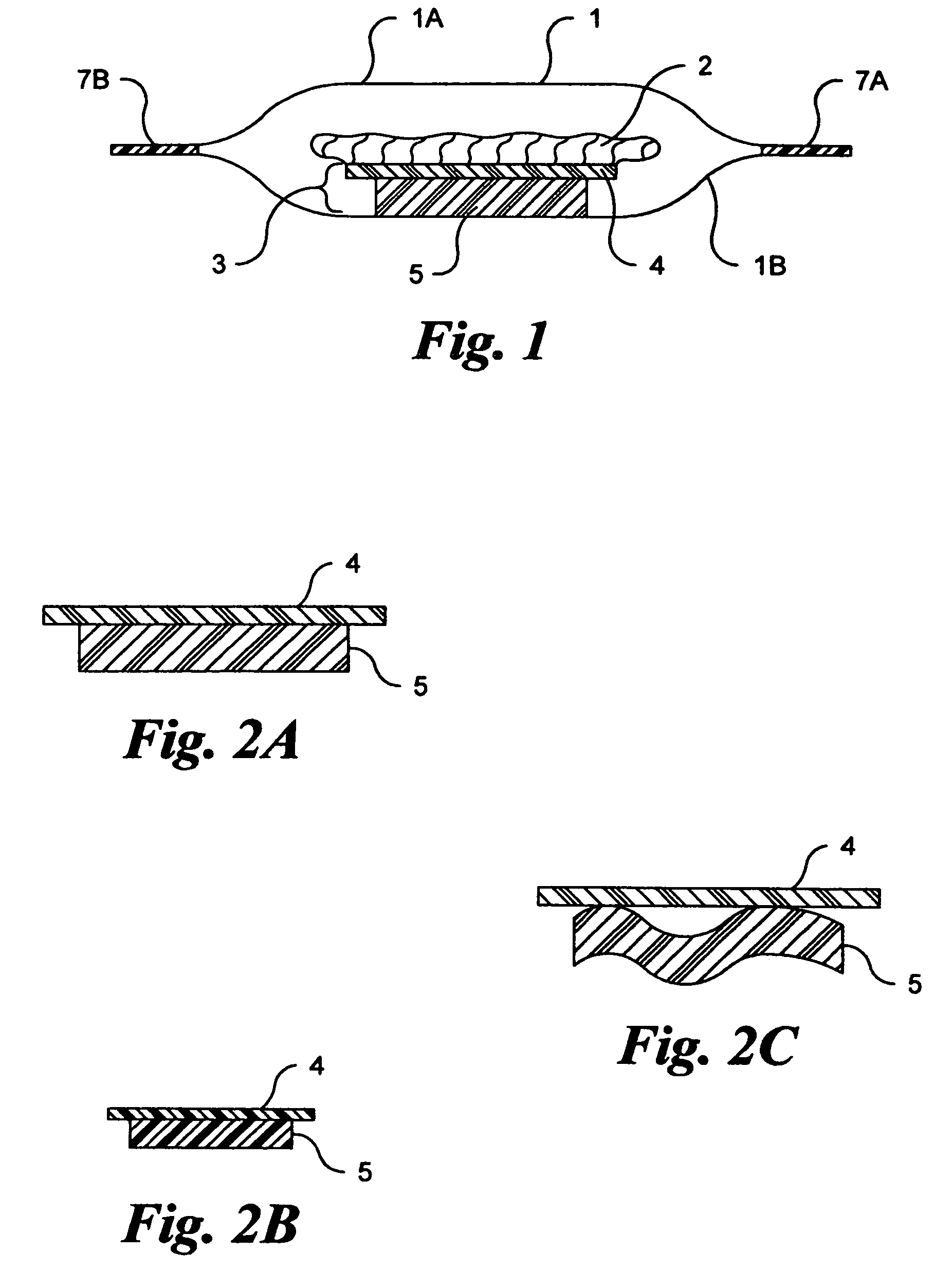Microwave cooking package with non-stick absorbing pad
a technology of absorbent pads and microwave cooking packages, which is applied in the direction of packaging foodstuffs, containers preventing decay, and packaged goods. it can solve the problems of excessive adhesion of food to the microwave cooking package materials of prior art systems, and the problem of food adhesion can be problemati
- Summary
- Abstract
- Description
- Claims
- Application Information
AI Technical Summary
Benefits of technology
Problems solved by technology
Method used
Image
Examples
example 1
Naturally Shrink-Resistant Absorbent Pad
[0056]An absorbent pad consists of a face layer of cellulosic printing paper weighing 3.3 oz. / yd.2 on a body layer of a carded and cross-lapped batt of 1.5 denier polyester fibers weighing 4.3 oz. / yd.2 needled with 180 penetrations per in.2. The face layer and body layer are glued together at their mutual interface by a light spray application of Super 77 paper adhesive (3M Co., Minneapolis, Minn.). Place the absorbent, dual-layer pad on a polytetrafluoroethylene-coated hot plate at 500° F. with the body layer contacting the plate for one minute. The length and width of the absorbent pad do not change.
example 2
Annealing a Non-Shrink-Resistant Absorbent Pad
[0057]An absorbent pad consists of a face layer of 0.6 oz. / yd.2 Reemay® spunbond fabric style 2250 on the body layer of Ex. 1. The face layer and body layer attach together as in Ex. 1. Place the absorbent pad on a polytetrafluoroethylene-coated hot plate at 500° F. with the body layer contacting the plate for one minute. The length and width of the face layer shrink to about 80% of the respective dimensions prior to heating.
[0058]Place a new sample 12 inch long×12 inch wide of the absorbent pad in a convection oven and heat at approximately 50° F. / min. from room temperature to 480° F. and hold at this temperature for 3 minutes. Shut off power to the oven and allow it to cool to ambient temperature. The cooled absorbent pad is approximately 10 inches long×10 inches wide.
[0059]Place the just-annealed absorbent pad on a polytetrafluoroethylene-coated hot plate at 500° F. with the body layer contacting the plate for one minute. The length a...
example 3
Reinforcing a Shrink-Resistant Absorbent Pad with Mesh
[0060]Place a sheet of the face layer material of Ex. 2 onto a sheet of 0.25 inch×0.25 inch rectangular opening mesh of 10×10 per inch cotton warp and weft filaments of 280 CN cotton count. Press this assembly between the platens of a hot press at 300° F. and compress the platens to 500 psi pressure for 10 seconds. The mesh bonds to the adjacent surface of the face layer. Place the cotton mesh-reinforced face layer on a body layer of Ex. 1 with the mesh side of the face layer contacting the body layer. Attach the face layer and body layer at their mutual interface as in Ex. 1.
[0061]Place the polyester mesh-reinforced absorbent pad on a polytetrafluoroethylene-coated hot plate at 500° F. with the body layer contacting the plate for one minute. The length and width of the absorbent pad each shrink by less than 10% of the respective dimensions prior to heating.
PUM
 Login to View More
Login to View More Abstract
Description
Claims
Application Information
 Login to View More
Login to View More - R&D
- Intellectual Property
- Life Sciences
- Materials
- Tech Scout
- Unparalleled Data Quality
- Higher Quality Content
- 60% Fewer Hallucinations
Browse by: Latest US Patents, China's latest patents, Technical Efficacy Thesaurus, Application Domain, Technology Topic, Popular Technical Reports.
© 2025 PatSnap. All rights reserved.Legal|Privacy policy|Modern Slavery Act Transparency Statement|Sitemap|About US| Contact US: help@patsnap.com



